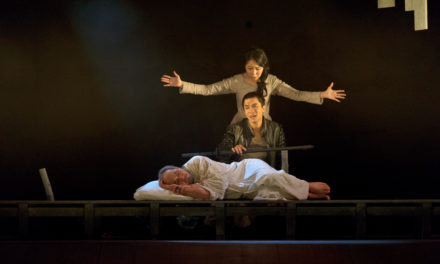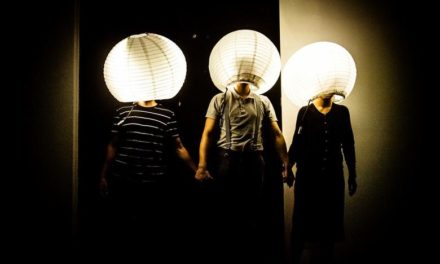The Philippine Educational Theater Association (PETA) lives up to its vision of “mounting out-of-the-box, cutting-edge productions that mainstreams relevant issues.” This year is no different as they enamor us with a beautiful masterpiece, combining a Shakespearean classic, The Tempest, with a familiar Filipino experience that happened almost 3 years ago, the typhoon Haiyan.
The Tempest Reimagined is a co-production between the British Council and PETA. Other partners include the Royal Academy of Dramatic Arts (RADA) and Japan Foundation. It is a modern adaptation of Shakespeare’s The Tempest set on a Philippine island hit by super typhoon Haiyan, and incorporates stories of the storm’s survivors. It features award-winning artists from the Royal Academy of Dramatic Arts (RADA), Hong Kong, and Japan. The play is directed by Nona Shepphard, while the script is co-written by Shepphard and Liza Magtoto. Costume and stage design is by Marsha Roddy.
Murphy Report had the chance to exclusively interview Marsha Roddy, the production designer and Cecilia Garrucho, a theater actress, to give us a sneak peek of what The Tempest Reimagined is about.
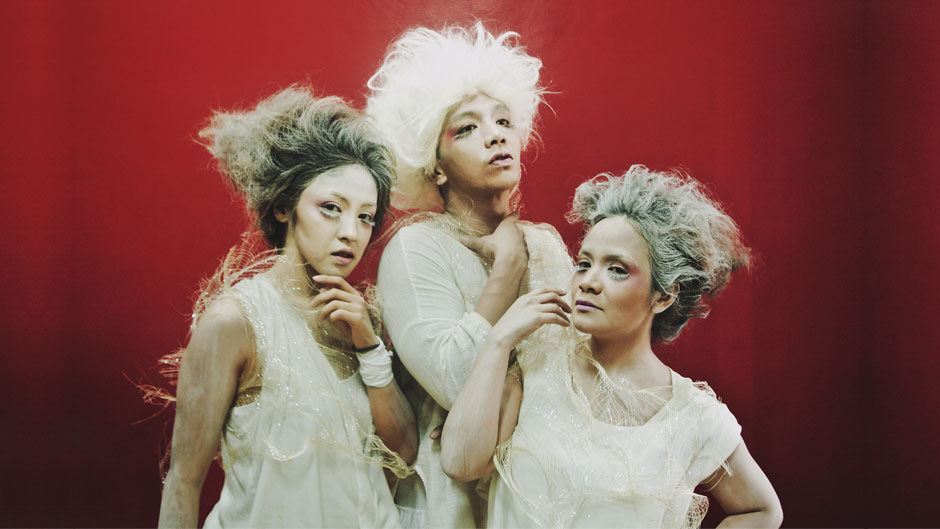
The Tempest Reimagined, The Philippine Educational Theater Association (PETA). Gio Gahol, Gab Pangilinan and Ian Segarra alternating as Ariel. Press photo.
Can you give us a short introduction on The Tempest Reimagined?
The Tempest Reimagined is part of the death anniversary of Shakespeare. The British Council brings many productions all over the world linked with Shakespeare and celebrating Shakespeare. Nona Sheppard, the writer and director of The Tempest Reimagined has a lovely link here with PETA theater and they decided to bring the production, and as I have known her for many years in London, she asked me to design it for her.
How did you conceptualize the production design?
To start with, The Tempest Reimagined is two stories, one alongside each other. The Shakespearean Tempest, but there’s also looking at the survivors from Yolanda. Nona Sheppard has cleverly interlinked the two stories, so we look at both. When I started my research, I started looking at Yolanda and the survivors, and looking at photos of what happened; how people survived and the destruction. I also read the Tempest and I was looking at both sides. So, that’s how I started.
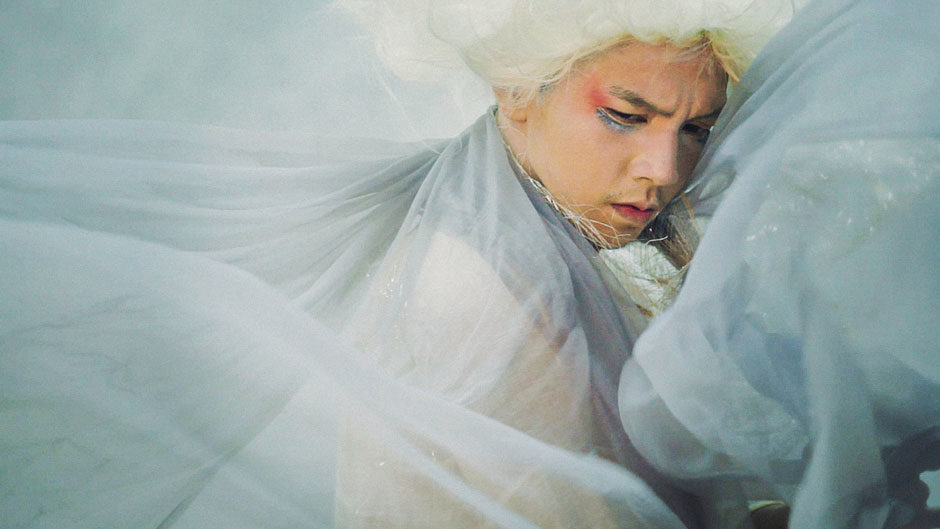
The Tempest Reimagined, The Philippine Educational Theater Association (PETA). Gio Gahol as Ariel. Press photo.
How long did the process of designing take place, from the preparations and planning?
I was here earlier in the year. We talked about the concepts. Nona did the first draft and I started with a very small model. Scale 1:50 which gives the director a feeling of the direction of where I was going. And then now, there’s a 1:25 model of the actual designs. With the designs, I wanted something that had some of the rawness and danger of what it looked like after Yolanda. There’s a lot of wood and a lot of destruction, but I also wanted to have a feeling of the Shakespearean time. It’s kind of a hybrid of Shakespearean time and Yolanda, the whole set.
So far, what are the challenges you have encountered in designing this production?
I think the challenge was going from one story to another; going from the survivors of this time and going back to Shakespearean time. So what’s happened with the costumes, the Shakespearean part was sort of a merge between contemporary and a hint of like the 16th Century, and then the Yolanda survivors have a unity about them. They’re naturalistic but stylized.
Is this your first production in the Philippines?
Yes!

The Tempest Reimagined, The Philippine Educational Theater Association (PETA). Gab Pangilinan as Ariel. Press photo.
How has it been so far?
It’s fabulous so far. And it’s interesting working with another culture, understanding so much more about what’s happening in the Philippines like Yolanda and going to that in depth; just making all the performances. We’re at a stage now that we’re going into production. We’re starting to make the costumes and we’re looking at making the set so this starts getting very exciting now. Everything starts coming together. As a designer, you work on your own a lot in your studio, but theater is collaborative. It’s such a collaborative process and there are so many people involved. And this is the exciting part when everybody starts coming together.
Each production is unique, but what sets it apart to the other productions or sets you have designed?
I think every production is special. Because as a designer, every time you design, it’s new. I have rarely ever done the same production again or if you are doing the same play or the same musical, it’s usually with a different director, different actors. I think everyone is special because everyone is different.
What should the audience expect and look forward to in The Tempest Reimagined?
Expect from The Tempest to be taking on two journeys and looking at how those journeys cross. They’ll leave with the sense of that “in the arts they can heal.” That’s through music, dance, theater, there is a healing process going on. And I think the main thing you’re left with is the sense of hope, which is very important.
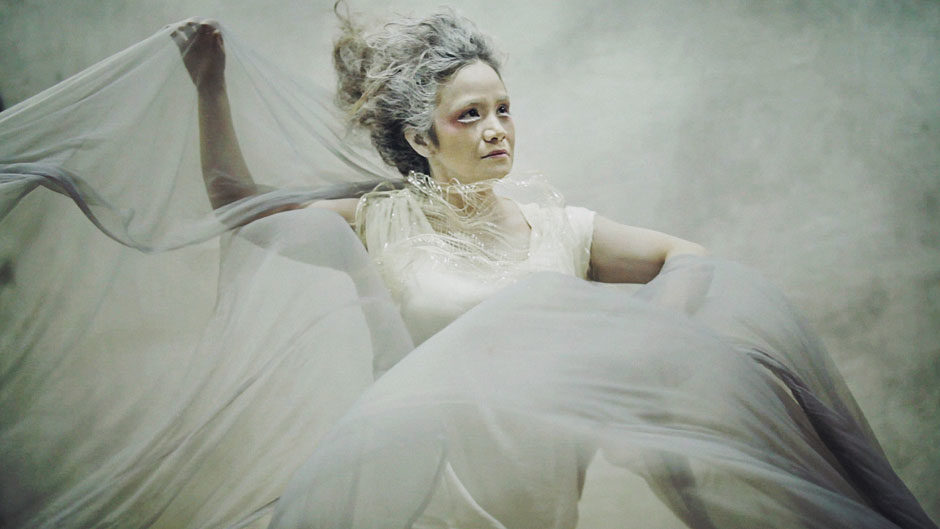
The Tempest Reimagined, The Philippine Educational Theater Association (PETA). Ian Segarra as Ariel. Press photo.
Can you briefly tell us the story of the Tempest Reimagined?
It’s a story, originally, about revenge. Prospero was thrown away into exile across the sea. He has magic powers, so he mastered that to be able to get even with his sister, who threw him out of his kingdom. He called the storm to bring over to his island the people who hurt him the most.
This is reimagined, so how different is this from the original Shakespearean play?
We will try to weave in two stories about Shakespeare’s “The Tempest” but we will put in the Philippine experience of Yolanda which, as everybody knows, it’s about this violent storm so in the sense it will be different. We will be bringing the Philippine experience into the original Shakespearean tale to see where both stories can meet so that in the end there is hope, resilience, and rebuilding.
Who conceptualized this and how did PETA start to create this play?
PETA has never been a stranger to Shakespeare. Ever since the early years, we believe that classics should be told so that modern audiences can appreciate them, more so, Shakespeare. Shakespeare is for people of all time. We have this growing relationship with the British Council. And they sent over a RADA instructor, Royal Academy of Dramatic Art, director/actor/trainer, Nona Sheppard. And she did a workshop here which the participants really loved and so we said, “why can’t we go further on for a richer collaboration?” And so, we thought why not “The Tempest”? At the same time, to give it a Filipino dimension, we can bring in the Yolanda experience. Coincidentally, PETA has worked the past two years on the ground in Leyte, especially in Palo; working with the survivors there and we brought a cultural campaign on how to put across among the community’s disaster risk reduction management. So, our actors have been there for two years living among the people. And we thought that experience is so rich, why not merge with the Yolanda experience? So we suggested to Nona Sheppard and the British Council, why not Leyte? So you can view the experience from the ground, hear the stories of the people, and how they survived. That’s how it came to be.

The Tempest Reimagined, The Philippine Educational Theater Association (PETA). Yeyin Dela Cruz as Miranda. Press photo.
What are the challenges so far?
The creative challenge─ how to mix the two stories together seamlessly.
We know that each production is unique, but what sets it apart from the other productions you’ve had in PETA?
This would involve artist and Director from Great Britain, Nona Sheppard and Production Designer, Marsha Roddy. Lighting will be brought over by the Japan Foundation, and of course, PETA represents the Philippines and Filipino actors, so it’s a rich collaboration. That’s the difference. And we’re hoping that if there are creative people coming together to put out this piece, which is grounded in Philippine social reality, what better way is it to let the Filipino audience understand, appreciate, and, perhaps, love Shakespeare more.
How long was the planning?
Maybe over a year. But if you consider the build-up with the relation with the British Council, it’s been the past 4 years.

The Tempest Reimagined, The Philippine Educational Theater Association (PETA). John Moran as Caliban. Press photo.
What should the audience look forward to in the Tempest Reimagined?
They should look forward to a rich, creative experience. You can imagine the production, design, the costume, the acting, plus that Philippine experience that will bring to the whole production. It’s The Tempest for the Filipino taste.
During our discussion, you mentioned what you want to impart to the audience. What do you want them to take home from this production?
Most people, especially students, they think, “Huh? Shakespeare? I don’t want anything to do with Shakespeare because that’s “nosebleed” material!” We want the audience to set aside their fear and discover how beautiful Shakespeare is. Especially if you bring with it an experience familiar to you, then you will hear Shakespeare talking to you through hundreds and hundreds of years.
This November, prepare to be captivated as the Philippine Educational Theater Association (PETA) brings us "The Tempest Reimagined", a beautiful masterpiece, combining a Shakespearean classic with a familiar Filipino experience.*It will be shown at the PETA Theater from November 11 to December 4, 2016. Wednesday to Friday schedules are at 8:00 pm, and Saturday to Sunday schedules at 3:00 pm and 8:00 pm.For more information, kindly visit www.petatheater.com or call Ticketworld at 8919999.*
Posted by Murphy Report on Tuesday, October 25, 2016

This article was originally published at TheMurphyReport.com Reposted with permission. Read original article here.
This post was written by the author in their personal capacity.The opinions expressed in this article are the author’s own and do not reflect the view of The Theatre Times, their staff or collaborators.
This post was written by The Theatre Times.
The views expressed here belong to the author and do not necessarily reflect our views and opinions.




